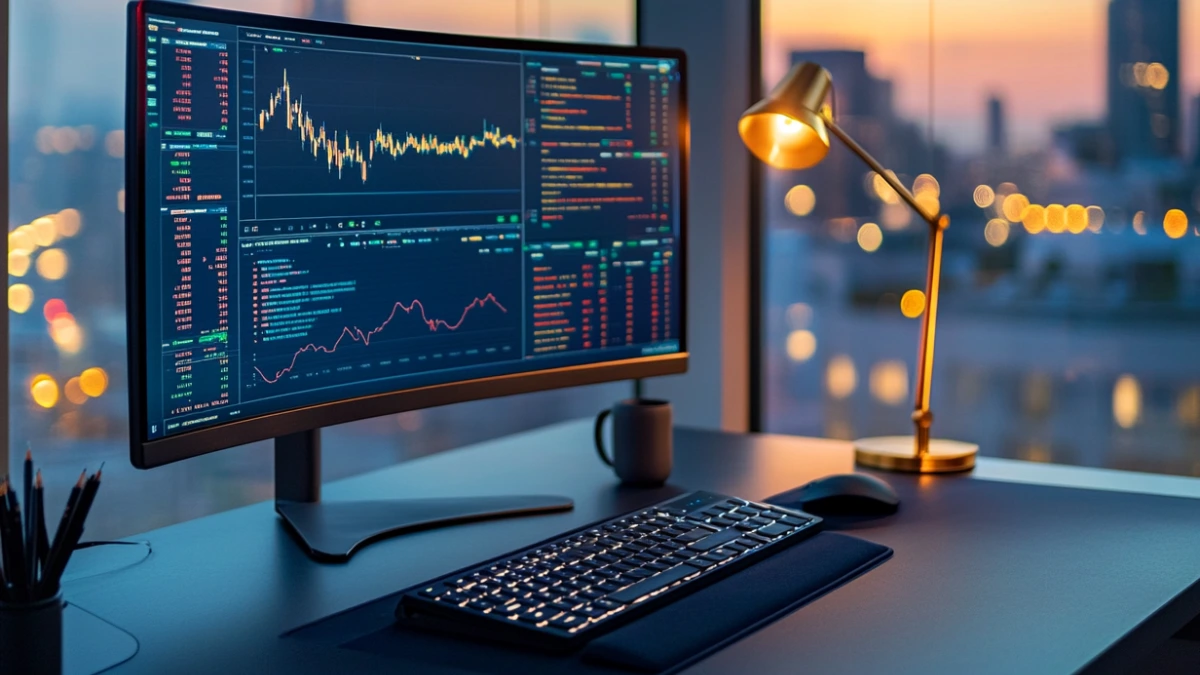Why Mental Burnout Is the Silent Killer of Traders
If you’ve ever closed your charts after a long session and felt completely drained—mentally foggy, emotionally numb, or physically exhausted—you’re not alone. Trading isn’t just about numbers; it’s a high-performance mental sport that taxes your brain as much as any intense job or competition. And if you don’t manage your mental energy wisely, you’ll experience burnout—a silent killer of performance, consistency, and passion.
Mental burnout in traders manifests as decision fatigue, loss of discipline, reactive behavior, emotional trading, and even anxiety. The worst part? It creeps in slowly—one overextended day, one missed lunch, one lost trade at a time—until your edge is gone.
At Mastery Trader Academy, we teach traders to think like professionals. That means recovery and mental care are part of your strategy, just like technical analysis and journaling. In this post, you’ll learn exactly how to avoid mental burnout after trading, recover faster, and stay sharp for the long run.
What Is Mental Burnout in Trading?
Mental burnout is the cognitive and emotional exhaustion that comes from extended stress and overexertion without proper recovery. In trading, it often shows up as:
- Feeling tired even after a full night’s sleep
- Losing motivation to analyze charts
- Making impulsive trades or breaking rules
- Overreacting to market losses or wins
- Becoming emotionally detached from your process
Burnout leads to inconsistent performance, emotional decision-making, and eventually quitting trading altogether.
1. Recognize the Warning Signs Early 🚨
The first step in avoiding mental burnout is awareness. Many traders push through tiredness without realizing their performance is slipping.
Early burnout signs include:
- Headaches during or after sessions
- Irritability or snapping at others
- Difficulty focusing on charts or news
- Avoiding journaling or skipping your review routine
- Feeling dread before the market opens
At Mastery Trader Academy, we recommend traders log mood and energy levels daily—just like a trading journal. This helps catch trends before they become problems.
2. Use a Structured Post-Session Wind-Down 🧘♂️
What you do after trading is as important as what you do during it. Build a structured routine to let your brain switch off and reset.
Try this 20–30 minute post-session routine:
- Turn off charts and alerts
- Take 5 deep breaths
- Write down 1 win, 1 lesson, and 1 emotion from today’s session
- Stretch or take a short walk (10–15 mins)
- Drink water and eat a nutrient-dense snack (see our Brain-Boosting Snacks)
This helps your nervous system transition from high-alert mode to calm, reducing long-term stress.
3. Don’t Skip Meals or Hydration 🍽️💧
One of the most common burnout triggers is trading on an empty tank. Low blood sugar, dehydration, or caffeine overload can amplify emotional swings and slow cognitive function.
During your trading day, aim for:
- A light breakfast with protein and healthy fats (e.g., eggs + avocado toast)
- Steady water intake (aim for 2L per day)
- Mid-session snack like Greek yogurt + berries or almonds
Here are 5 great snack recipes for traders.
4. Limit Screen Time After Trading 📵
Too much screen exposure after an intense session keeps your brain overstimulated. This prevents you from fully decompressing.
Instead of more charts or scrolling:
- Read a physical book (especially on trading psychology)
- Do a non-digital hobby (puzzles, drawing, gardening)
- Go outside and get sunlight
Your brain needs non-market input to stay mentally fresh. If you want to grow, rest is part of the work.
5. Create a Rest & Recovery Schedule 🛌📆
Just like you schedule trades, schedule rest. Set boundaries and respect them.
Examples:
- No trading or charting past 3:00 PM
- No screens 1 hour before bed
- Weekly “off day” from all market activity
You can also follow a cycle-based schedule: trade 3–4 days, then take a day off to review, reflect, and restore.
6. Use Active Recovery Techniques 🏃♀️🧠
Burnout isn’t fixed by just doing nothing. Your brain needs active recovery: movement, stimulation, and relaxation combined.
Try:
- 30-minute walk listening to music or a trading podcast
- Stretching or mobility work
- Breathing exercises (box breathing, 4-7-8 method)
- Gentle workouts like yoga or Pilates
Even 10 minutes of mindful movement can lower cortisol and improve decision-making the next day.
7. Build Mental Resilience Before the Burnout Starts 🧠🔥
The best way to avoid burnout? Build mental toughness before things go wrong.
We recommend every trader:
- Practice visualization (see your future calm, disciplined self)
- Read daily on mindset and trading psychology
- Create a reward system for sticking to your plan—not just profits
- Join a trading community for support
Start here: Why Most Traders Fail – The Psychology Behind Mistakes
The market is a mirror—if you feel tired, anxious, or overwhelmed, it will show in your trades. Training your brain is just as important as testing strategies.
Related Reads:
- 5 Brain-Boosting Snacks to Keep on Your Desk While Trading
- Mastering Trading Psychology: Conquer Fear, Greed & Emotion
External Sources:
- Mayo Clinic: Burnout Symptoms and Prevention
- APA: Managing Stress for Mental Health
- National Institutes of Health – Cognitive Fatigue in Professionals
🧠 The Link Between Burnout and Revenge Trading
One of the most overlooked effects of mental burnout is revenge trading—when a trader tries to “win back” a loss emotionally instead of strategically. After a tough session, especially one with a major drawdown or multiple stop-outs, your brain can go into a fight-or-flight response. You might start ignoring your rules, doubling your position size, or entering trades impulsively. This isn’t bad strategy—it’s emotional dysregulation, and it’s directly tied to cognitive fatigue.
When your brain is tired, your decision-making shifts from the prefrontal cortex (logic and planning) to the amygdala (emotions and survival). That’s why recovering your mental clarity after a session is just as important as your morning routine. Taking a break, breathing deeply, reviewing your trades, and not re-entering the market impulsively is part of protecting your capital and your psychology.
🕯️ Why Journaling Emotions Matters More Than Trades
Most traders understand the value of journaling their entries, exits, and setups—but few take time to journal how they felt during and after the session. This is a huge mistake. Your emotional patterns often reveal more than your technical setups.
Did you feel impatient before a loss? Did you hesitate on a winning setup because of a prior mistake? Did your confidence dip after missing a trade? These moments may seem small, but over time, they accumulate and silently guide your behavior in the markets.
By journaling emotions—both good and bad—you create a mental map of your emotional strengths and blind spots. Over time, this builds emotional intelligence, increases resilience, and dramatically reduces your chances of burning out from mental overload.
🏠 Creating a “Shutdown Ritual” to Separate Work and Rest
If you’re a full-time or work-from-home trader, it’s easy for your trading hours to blur into your personal life. This is especially dangerous when it comes to mental recovery, because your brain never truly logs off.
A simple but powerful fix is to create a “shutdown ritual”—a physical and mental process that signals the end of your trading day. This could be as simple as:
- Closing all charts and browser tabs
- Shutting down your computer completely
- Turning off phone notifications
- Lighting a candle or incense
- Changing clothes or taking a hot shower
- Playing calm music for 10–15 minutes
This transition cues your nervous system that it’s time to shift out of high-focus mode and begin recovery. Over time, this can significantly lower stress hormones, improve sleep, and reduce mental fatigue.
🧘♂️ The Power of Microbreaks During Trading Sessions
Burnout doesn’t always come from one intense day—it often builds up because of a lack of micro-recovery throughout the day. Many traders sit in front of the screen for hours without standing, stretching, drinking water, or looking away from the monitor.
We recommend inserting “microbreaks” every 60–90 minutes during live trading. These breaks can be as short as 3–5 minutes and include:
- Walking to the kitchen to refill your water
- Doing 10 squats or push-ups
- Closing your eyes and breathing for 60 seconds
- Looking outside to relax your eyes
These small resets keep your brain from getting overloaded. They improve blood flow, reduce mental fatigue, and often help you return to the screen with fresh eyes, ready to spot opportunities you might have missed before.
🌿 Using Nature and Light to Speed Up Recovery
One of the fastest ways to reset your mental state after a stressful trading session is to get outside and into nature. Exposure to natural light, fresh air, and green environments has been shown to reduce cortisol (the stress hormone), enhance mood, and restore mental energy.
If you can’t access a park or trail, even a 10-minute walk around your block or time on your balcony can help. Combine that with physical movement and a screen-free moment, and your recovery rate from stress can nearly double.
Sunlight exposure during the day also improves your circadian rhythm, which means deeper sleep at night and a more alert brain the next morning.
🧩 Learning After Burnout: What Is It Telling You?
Burnout isn’t just a sign that you’re doing too much—it’s a signal that something in your routine isn’t sustainable. Instead of just recovering and repeating the same routine, take time to reflect on what burnout is trying to tell you:
- Are you overtrading or working outside your edge?
- Are you expecting too much from yourself too fast?
- Are your goals realistic for your current stage?
- Are you following someone else’s schedule instead of your own?
Use burnout as a checkpoint, not a failure. Real mastery comes when you design a workflow and lifestyle that allows you to perform sustainably, long-term—without sacrificing your health or emotional well-being.
🔚 Final Thoughts: Protect Your Mind Like You Protect Your Capital
In trading, most people obsess over protecting their account balance—but forget to protect the one thing that drives every decision: their mind. Mental burnout doesn’t just affect your mood—it sabotages your focus, your judgment, your discipline, and ultimately, your profitability. The smartest traders understand that recovery is part of performance. They treat their energy as a limited asset and create boundaries to preserve it. By incorporating post-session rituals, fueling your brain with the right nutrition, limiting overstimulation, and prioritizing rest—you give yourself the clarity and strength to show up tomorrow with consistency and confidence. In a profession that rewards the calm and the calculated, your mental health is not optional—it’s your true edge.
Your Edge is Energy
Avoiding mental burnout isn’t about taking long vacations or quitting when it’s hard. It’s about treating your energy and emotional bandwidth as sacred trading capital.
When you manage your focus, rest, and post-session routine like a pro, you’ll:
- Make sharper decisions
- Handle losses with clarity
- Spot better setups
- Stay passionate and engaged
At Mastery Trader Academy, we believe your mind is your #1 asset. Protect it.
Your strategy matters. Your edge matters.
Mental Burnout, Mental Burnout, Mental Burnout, Mental Burnout, Mental Burnout, Mental Burnout, Mental Burnout, Mental burnout, Mental burnout, Mental burnout

